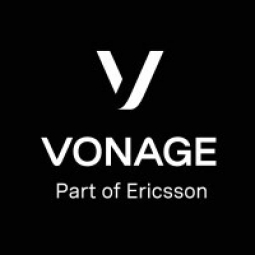技术
- 平台即服务 (PaaS) - 应用开发平台
- 传感器 - 相机/视频系统
适用行业
- 水泥
服务
- 系统集成
关于客户
Monjin 是一家致力于组织全球人才的公司,让专家和招聘专业人员能够以虚拟方式与人才见面并提供质量评估。他们的数字视频平台将不断增长的专家面试官网络与求职者直接连接起来,使企业能够快速找到具有合适技能的人才并提供全球工作机会。
挑战
在视频通信兴起之前,当 WebRTC 技术还相对较新时,Monjin 看到了利用该技术改变世界各地公司处理招聘和招聘方式的潜力。其目标是建立一个在线平台,并建立一个由来自不同行业的专家组成的网络,这些专家将有偿评估候选人和学生的基本技能,以便雇主能够获得各种预先审查的个人资料和面试记录。为了实现这一目标,Monjin 试图解决招聘市场中的两个关键问题:发现人才的耗时挑战以及与面对面面试相关的后勤成本。为了使这个平台达到最佳状态,Monjin 需要一个 API 平台来作为全球、大规模、可靠的视频交互的基础。
解决方案
Monjin 选择 Vonage Video API 作为构建其人才招聘视频平台的解决方案。 Vonage Video API 提供了一个简单的基于浏览器的界面,不需要用户下载任何软件或应用程序。符合数据隐私和信息安全法律法规,满足人才引进的具体要求。通过选择合适的视频 API 提供商,Monjin 能够构建具有独特特性和功能的定制平台,同时确保全球数百万分钟人才面试的可靠性。
运营影响
数量效益

Case Study missing?
Start adding your own!
Register with your work email and create a new case study profile for your business.
相关案例.

Case Study
System 800xA at Indian Cement Plants
Chettinad Cement recognized that further efficiencies could be achieved in its cement manufacturing process. It looked to investing in comprehensive operational and control technologies to manage and derive productivity and energy efficiency gains from the assets on Line 2, their second plant in India.

Case Study
Digital Transformation of Atlanta Grout & Tile: An IoT Case Study
Atlanta Grout & Tile, a Tile, Stone & Grout restoration company based in Woodstock, Georgia, was facing challenges with its traditional business model. Despite steady growth over the years, the company was falling behind the web revolution and missing out on the opportunity to tap into a new consumer base. They were using independent software from different vendors for each of their department information and workforce management. This resulted in a lot of manual work on excel and the need to export/import data between different systems. This not only increased overhead costs but also slowed down their response to clients. The company also had to prepare numerous reports manually and lacked access to customer trends for effective business decision-making.

Case Study
Revolutionizing Construction Equipment Rental: A Case Study on ProsRent and ENO8
ProsRent, a startup that won the 'Best Financial Opportunity' and 'Best Pitch' at CodeLaunch 2016, aimed to revolutionize the way construction professionals source and rent heavy equipment. In the construction industry, project managers and contractors typically rent heavy equipment from supply companies. However, predicting inventory can be challenging, and finding the required equipment at the right time and place can be a hassle. If the preferred vendor doesn't have the required equipment, it results in wasted time and money in searching for it, often leading to higher costs due to non-preferred rates and increased delivery costs if the vendor is located far from the job site. Suppliers, on the other hand, desired access to a wider base of trusted renters that they didn't have to vet themselves and wanted to offer dynamic rental pricing based on demand and availability in their market. ProsRent's challenge was to produce a minimum viable product that was fast and first to market but also strong enough to engender loyalty and repeat business from the target market.

Case Study
AI-based Automation for Commercial Office HVAC: A Verdigris Case Study
Modern buildings are required to run longer hours, support a variety of end uses, and contribute to higher levels of economic productivity, leaving a thin margin for error. However, even the most advanced building and environmental control systems have failed to adequately support facilities and operations management. Buildings are often inefficient and the people using them are underserved. To meet occupant comfort and maintain cost and energy efficiency, a dynamic, AI-assisted approach is needed.

Case Study
Revamping EE's Legacy ERP: A Case Study on BT's Strategic Transformation
EE, even after its merger with BT, was operating its ERP estate on legacy infrastructure, hosted on the premises of a third-party supplier. This outdated system resulted in a volume-based operational model, higher time to market, longer delivery cycles, and unsatisfactory customer experience. BT recognized the need for a strategic transformation of these aging ERP systems and sought a partner who could proactively manage application services. The partner was also expected to handle development requirements associated with application management services, drive accountability, and ownership with a time and target-driven transformation of these services. BT's primary goals were to improve customer experience, reduce cycle time, and measure these improvements with precision.








